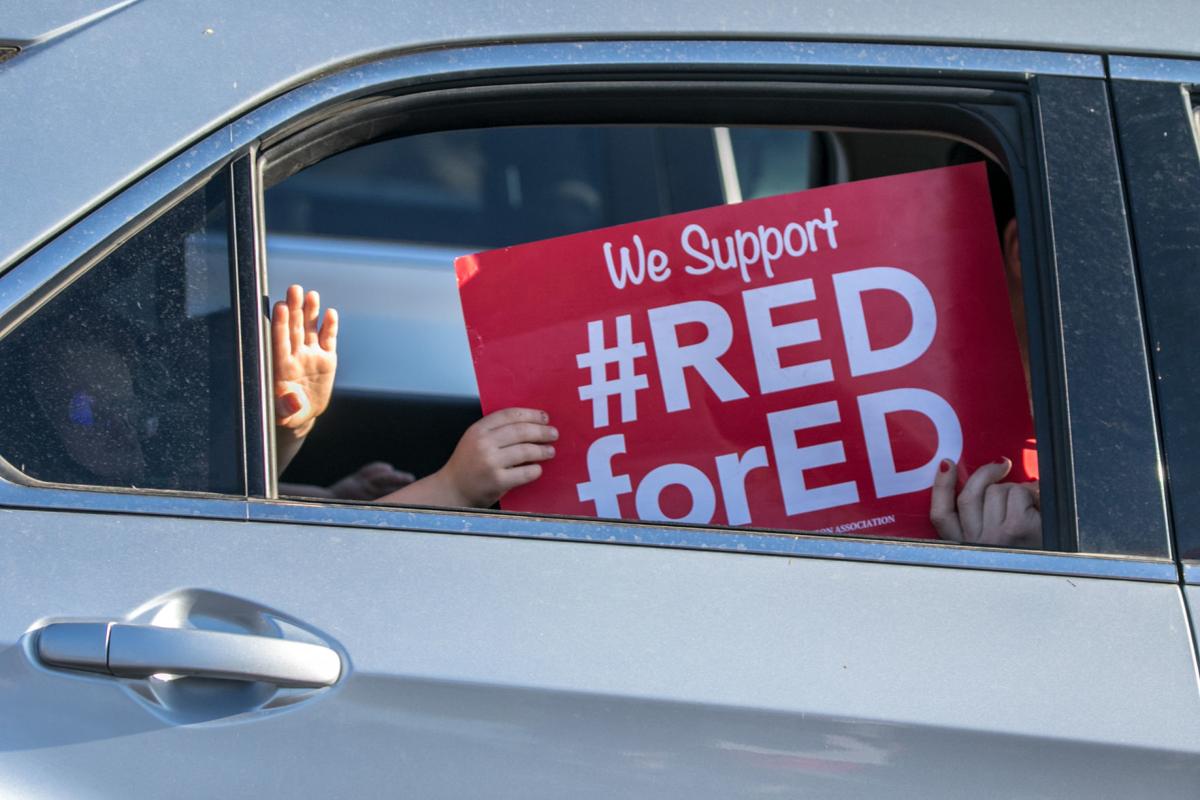PHOENIX — The question of whether Arizonans get to vote on a tax hike on the wealthy to raise $690 million a year for education could depend on what a judge thinks of a math teacher’s explanation of the difference between “percent” and “percentage point.”
At a hearing Tuesday, both sides agreed the Invest in Ed initiative would boost the tax rate on earnings above $250,000 a year for individuals and $500,000 from 4.54 percent to 8 percent. And what’s clear is the mathematical difference between the two figures is 3.46.
The petitions to put the issue on the November ballot describe the increase as 3.46 percent.
But Kory Langhofer, representing the Arizona Chamber of Commerce and Industry, argued that those signing the petition were misled into thinking the 4.54 percent tax rate would be going up just 3.46 percent. If that were true, he said, the new tax rate would be 4.7 percent, not 8 percent.
Langhofer told Maricopa County Superior Court Judge James Smith the petitions should have told signers that the increase, as expressed by percent, is really 76 percent.
He argued that if initiative organizers wanted to use that 3.46 figure, they should have told signers that is a “percentage point” increase. And Langhofer told Smith the failure of initiative organizers to use that phrase instead of “percent” on the petitions makes them illegally misleading and the judge should keep the measure off the ballot.
Langhofer even brought in Jack Chang, a former Glendale high school math teacher, to explain to Smith that, at least academically speaking, it is factually incorrect to describe the increase as 3.46 percent.
But Chang, under cross examination by attorney Jim Barton, who represents initiative organizers, acknowledged that historically people have used the term “percent” where they probably should have used “percentage point.”
Langhofer also brought in pollster Wes Gullett in his bid to prove that people who signed the petition with the 3.46 percent rate hike explanation might not have signed had they known the actual increase, expressed in pure percentage increase, was 76 percent.
It would be even more for incomes of more than $500,000 for individuals and $1 million for couples, with the rate going to 9 percent. Langhofer said that should have been described as a 98 percent increase on the current 4.54 percent, and not a 4.46 percent hike as the petition says.
Gullett told the judge he asked people how they would interpret it if their taxes went from $1,000 a year to $2,000. He said two-thirds described that as a 100 percent increase.
Smith, however, was not impressed.
He asked Gullett why he didn’t ask respondents a question that involved percentages, such as how they would interpret a tax rate going from 2 percent to 3 percent — and how many people would have described that as a 1 percent increase versus a 50 percent increase. That, the judge said, would seem to be a closer parallel to what is happening here.
“We didn’t consider it,” Gullett conceded, saying he was in a rush to get the polling done in time for Tuesday’s hearing.
If that argument over percent versus percentage point doesn’t persuade Smith to keep the measure off the ballot, Langhofer has others.
One is the contention that the initiative, as crafted, does more than hike the tax rates on the richest Arizonans. Langhofer said it also would repeal a 2016 law that adjusts income tax brackets annually — a point disputed by initiative organizers — and that petition signers were not made aware of that fact.
Numbers issues aside, Smith also needs to decide whether to allow some petitions to be counted amid questions about whether the circulators met all the legal requirements, like filling out their full name and address.
That issue is crucial, with the admissibility of more than 2,500 petition sheets at issue, with up to 15 signatures on each sheet. Initiative organizers submitted about 277,000 signatures; at least 150,000 need to be found valid to put the measure to voters.
Langhofer said the Republican-controlled Legislature voted in 2017 to require all initiative petitions be in “strict compliance” with every provision of state election law. Prior to that, Arizona courts have allowed measures on the ballot if there is “substantial compliance” with the statutes.
He said that means those petitions with errors cannot be counted.
Smith, however, suggested there is evidence that the framers of the Arizona Constitution, in giving people the right to craft their own laws through initiatives, intended to give them wide latitude and “liberally construe” those legal requirements. And if that’s what he concludes, that would overrule and void the 2017 law.
The judge gave no indication when he will rule.





